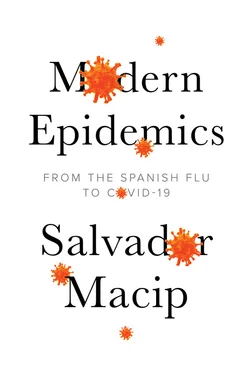In recent years, several studies have set about the task of identifying all the microorganisms that are to be found in different organs, generally using modern techniques to read their genes in order to relate them to obesity or illness. These studies give us a general idea of the microbes we carry around with us, although each person’s flora is, in fact, unique. Almost like our DNA. It depends more on the zone in which we live than on our genes, and personal habits have a considerable influence as well. An article published in January 2009 demonstrated that sets of intestinal bacteria vary even between twins. Nevertheless, the members of a family living under the same roof have similar flora. The article also indicated that obesity reduces the diversity of flora, as well as altering the genes and metabolism of microorganisms. It’s speculated that this might have consequences for our health, but we still aren’t sure what they might be.
This knowledge we are acquiring about the microbes that coexist with us has led to questions about whether they can be used for therapeutic purposes. There are now studies looking into ways of changing the composition of a person’s microbiota as a way of curing illnesses and even regulating the metabolism with the aim of weight loss. The easiest way is to take microbes from a healthy person’s faeces and transfer them to the patient. Informally known as a stool transplant, this isn’t such a simple process as it may appear, because it requires, first of all, filtering out the bad microbes and other contaminants.
It’s still not known whether this procedure might have any real benefit, but what is undeniable is that the microbiota plays an important role in our health, both positively and negatively. This could be more far-reaching than initially imagined. Some studies have even shown that the microbes inhabiting our intestines could affect the brain and somehow influence behaviour.
It’s well known that not all microbes are as beneficial as the ones I’ve just described. A group called pathogens , amounting to only 1,415 of all those that exist, have been found to cause infectious diseases in humans. Although they are clearly a minority, their impact on society has been, and is, immense.
Infections occur when one of these pathogens manages to enter our organism and overcome its defence systems. Problems arise when the microbe starts drawing on the resources of the organisms it has invaded to multiply nonstop. If this isn’t checked fast enough, it will end up interfering with the normal functioning of the body, presenting the symptoms characteristic of each infection, depending on the organs the invader prefers. Some of these symptoms are shared by many infectious diseases, for example, fever, shivers or feeling unwell in general.
It’s commonly believed that, thanks to the discovery of antibiotics, pathogenic microbes have ceased to be the terrible threat they were until just a few decades ago. To some extent, this is true. Nevertheless, we are a long way from being able to feel relaxed about this. On the one hand, bacteria that are resistant to the most commonly used antibiotics are constantly appearing. On the other, some serious illnesses still exist for which there are no vaccines or treatment. And there are still others that have both but, even so, we can’t stop them. Moreover, it should be recalled that antibiotics are only useful against bacteria, but they don’t work with viruses. It’s true that we have antivirals to fight these microbes, but they aren’t so effective, and we still haven’t produced such a wide range either. This, then, is a neverending struggle.
With regard to infections, there’s a series of terms that are frequently used to define their reach. For example, an outbreak is an infection localized among a relatively small group of people, for example, a family, a school or even a village. A typical case would be food poisoning, which tends to affect only those who have eaten food containing pathogenic microbes.
The next level is an epidemic , which is defined rather arbitrarily as an accumulation of infected people that’s bigger than ‘normal’. For example, if a disease is very rare, a mere handful of cases could be regarded as an epidemic. When an epidemic has spread through more than a continent or even the whole planet, we call it a pandemic . Technically speaking, the WHO officially declares a pandemic only when a disease goes beyond six phases, ranging from detection of the microbe in animals (phase 1) through to the continuing presence of the disease in more than one of the regions defined by the organization (phase 6).
An infectious disease that’s constantly present in a region without any significant fall or rise in the number of cases is said to be endemic . For example, malaria is endemic to many parts of Africa. Whether or not an outbreak turns into an epidemic, a pandemic or becomes endemic depends on many factors, among them the speed at which it spreads and the virulence of the disease it causes.
Which disease spreads fastest?
It has been estimated that the 1918 flu pandemic had an R0 of around 4 (meaning that each affected person infected four more). Seasonal flu (the annual one) normally has an R0 of between 1.3 and 3. The A(H1N1) flu pandemic of spring 2009 had an R0 of only 1.4, while that for measles is 15, which means that it’s a much more contagious disease than the others. The R0 for smallpox was between 5 and 10, and for AIDS it’s between 10 and 12. That for COVID-19 is still being calculated, but it could be close to 2 at the very most.
An infection’s ability to spread is defined by a variable called R0 , which is to say the number of new infections that, on average, each person with the disease can cause or, in other words, how many more people can catch the disease from each already infected person (see box). It’s also important to know the amount of time over which a person can infect others. With most infectious diseases there’s a period of incubation when, although the symptoms haven’t yet appeared, the microbe can often be transmitted. The longer the period, the greater the risk of the outbreak spreading because the infected person normally doesn’t know and appropriate measures to avoid contagion aren’t taken. One known example of this is COVID-19, which, going unnoticed in the early (between ten and fifteen) days, can be contagious. The extreme case is AIDS, which may not show any signs for years. In some cases, infected people will never develop the disease but can, nevertheless, pass it on to others. They’re called carriers .
Mary Mallon (1869–1938) has gone down in history as ‘Typhoid Mary’, the first person to be identified in the United States as a carrier of typhoid fever (a disease caused by the bacteria Salmonella , which is transmitted through contaminated food or drink) without ever being ill herself. Mary was a kind of epidemic on two legs. She infected fifty-three people in her lifetime but always denied that she was to blame. Moreover, she never wanted to leave her job as a cook, despite the very high chances that she would infect people through the food she prepared. When she was banned from cooking, she even changed her name so she could keep doing her job and thus continue to infect and kill her clients.
Mary, who worked in New York, was finally forced to go into quarantine. When she died (of pneumonia) she was still in isolation. It’s believed that she could have been born with the infection, as her mother had the disease when she was pregnant.
Читать дальше












